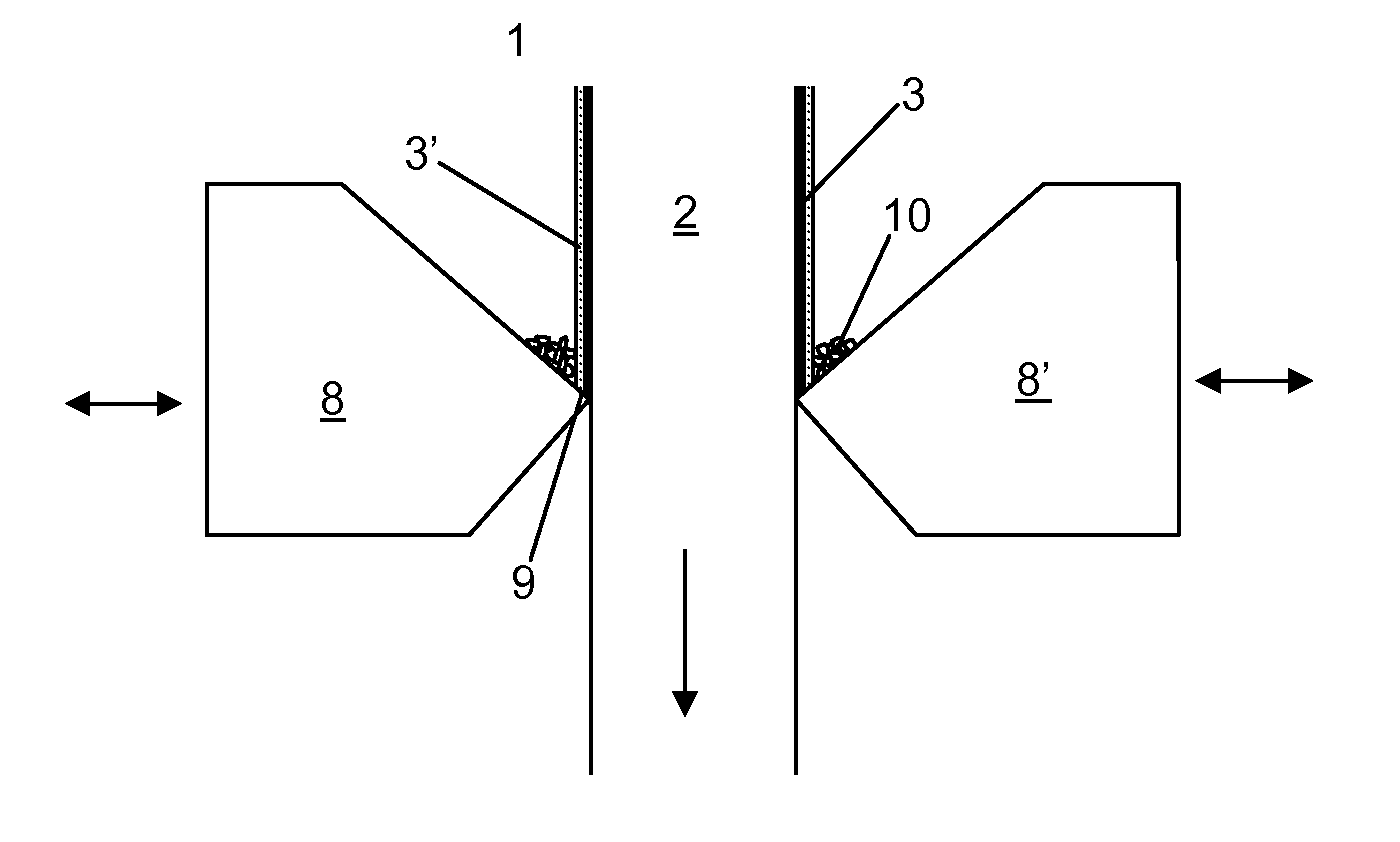Method to strip a portion of an insulated wire
a technology of insulated wire and stripping method, which is applied in the direction of laser beam welding apparatus, radiating element structure form, manufacturing tools, etc., can solve the problems of reduced space available, large number of connections, and extremely small diameter of wires used
- Summary
- Abstract
- Description
- Claims
- Application Information
AI Technical Summary
Benefits of technology
Problems solved by technology
Method used
Image
Examples
Embodiment Construction
[0030]The invention will be better understood by the following detailed description taken together with the following drawings:
[0031]FIG. 1 shows a cross section of an insulated wire
[0032]FIG. 2 shows a wire being stripped by a mechanical stripper
[0033]FIG. 3 shows a cross section of a wire stripped without preliminary flattening
[0034]FIG. 4 shows a cross section a wire after a flattening step of the method of the invention
[0035]FIG. 5 shows a cross section of a wire after the stripping method of the invention
[0036]FIG. 6 shows a top view of a stripped portion of a wire according the invention
[0037]FIG. 7 shows a top view of a wire with two stripped portions according the invention
[0038]FIG. 8 shows a wire stripping machine according the invention
[0039]FIG. 9 shows a top view of a crossover bridge
[0040]FIG. 10 shows a top view of an antenna circuit according the invention
[0041]FIG. 11 shows a wire being stripped by laser radiation according the invention
[0042]FIG. 1 shows an insulat...
PUM
| Property | Measurement | Unit |
|---|---|---|
| Fraction | aaaaa | aaaaa |
| Diameter | aaaaa | aaaaa |
| Diameter | aaaaa | aaaaa |
Abstract
Description
Claims
Application Information
 Login to View More
Login to View More - Generate Ideas
- Intellectual Property
- Life Sciences
- Materials
- Tech Scout
- Unparalleled Data Quality
- Higher Quality Content
- 60% Fewer Hallucinations
Browse by: Latest US Patents, China's latest patents, Technical Efficacy Thesaurus, Application Domain, Technology Topic, Popular Technical Reports.
© 2025 PatSnap. All rights reserved.Legal|Privacy policy|Modern Slavery Act Transparency Statement|Sitemap|About US| Contact US: help@patsnap.com



